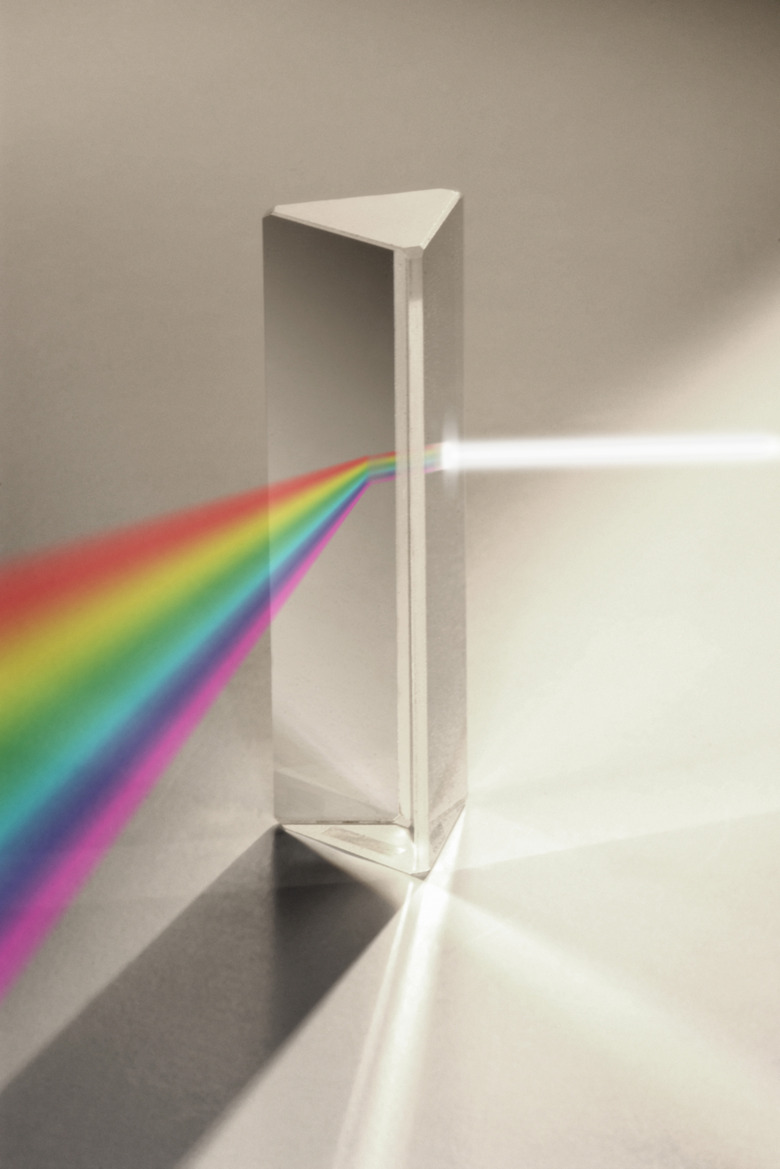Easy Indoor Rainbow Experiments
Students of all ages love rainbows, and learning a bit about the science behind rainbows and mixing colors is a great jumping off point for further scientific inquiries. Since you can't always guarantee that you'll see rainbows when going outside — unless, perhaps, you live in Hawaii — it's smart to bring the rainbow fun inside with easy to set up experiments.
Color Mixing for a Rainbow
Color Mixing for a Rainbow
Students can experiment with mixing colors to form their own rainbows. Give students access to the three primary colors — red, yellow and blue — and have them create their own rainbows. The best way to do this is to create a red arc, then a yellow arc, then a blue arc, then carefully blend the colors that are next to each other. More advanced students might be able to show greater variety of colors, with red going into red-orange going into orange going into yellow-orange.
Rainbow-Colored Glasses
Rainbow-Colored Glasses
Through a party or scientific supply store, you can order "rainbow glasses." When students put them on and look toward a light, they'll see a white light in the middle, surrounded by mini rainbows. This happens because the lens is scratched slightly to bend the light, but ask the children if they can guess why it works. If you've already explained that rainbows happen when the light gets bent, it should be easy to figure out.
Creating Rainbows
Creating Rainbows
A typical rainbow is made from white light bending through a surface, but it's also interesting to note that the color black is made up from a variety of colors mixed together. The Exploratorium offers an idea for an experiment surrounding this concept. Pass out coffee filters to the students and have them draw a black dot on their filters. Students can then pour a little bit of water on the dot at a time. As the filter absorbs the water, it carries particles from the colors inside the black dot with it, creating a rainbow of colors around the black dot.
A Rainbow From Black
A Rainbow From Black
A typical rainbow is made from white light bending through a surface, but it's also interesting to note that the color black is made up from a variety of colors mixed together. The Exploratorium offers an idea for an experiment surrounding this concept. Pass out coffee filters to the students hand have each one draw a black dot on their filter. Students can then pour a little bit of water on the dot at a time. As the filter absorbs the water, it carries particles from the colors inside the black dot with it, creating a rainbow of colors around the black dot.
Cite This Article
MLA
McCormick, Maggie. "Easy Indoor Rainbow Experiments" sciencing.com, https://www.sciencing.com/easy-indoor-rainbow-experiments-12757858/. 26 November 2013.
APA
McCormick, Maggie. (2013, November 26). Easy Indoor Rainbow Experiments. sciencing.com. Retrieved from https://www.sciencing.com/easy-indoor-rainbow-experiments-12757858/
Chicago
McCormick, Maggie. Easy Indoor Rainbow Experiments last modified March 24, 2022. https://www.sciencing.com/easy-indoor-rainbow-experiments-12757858/
